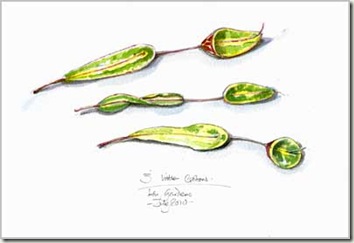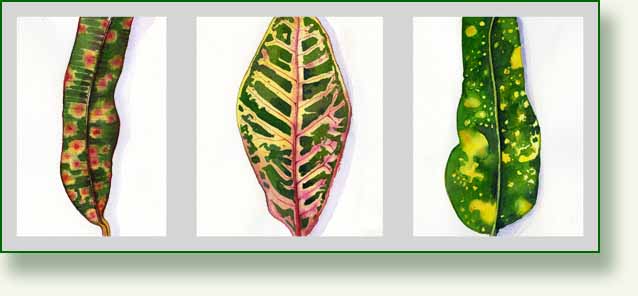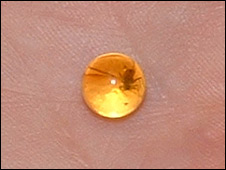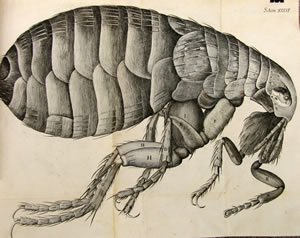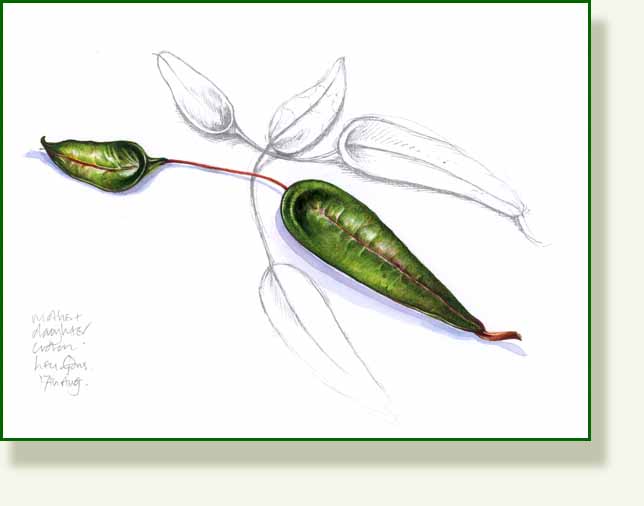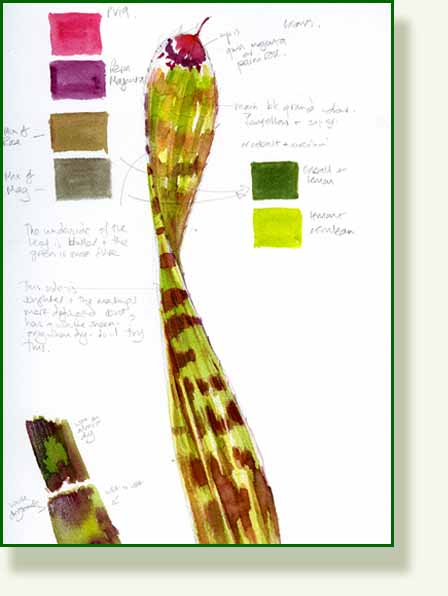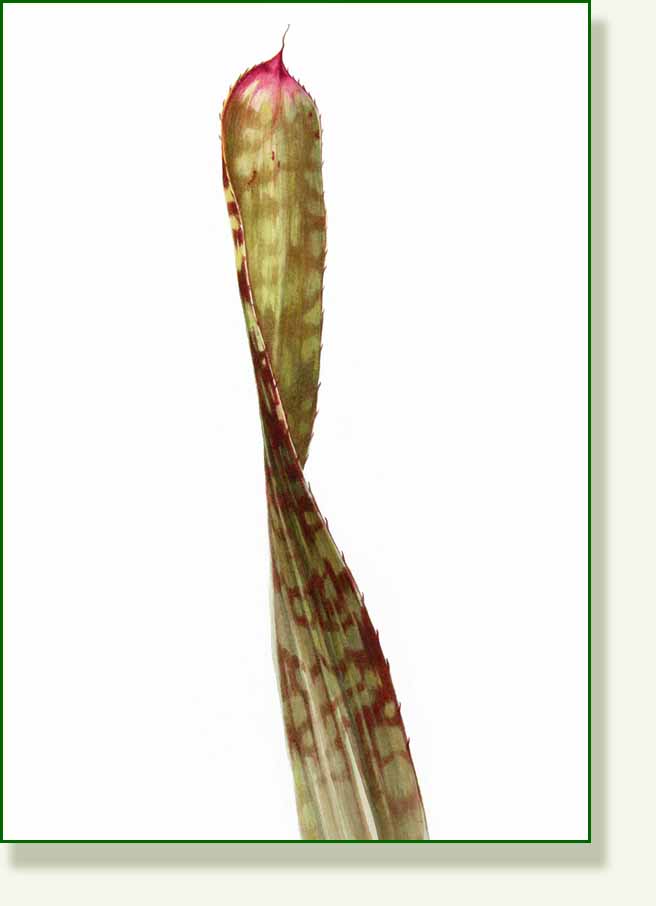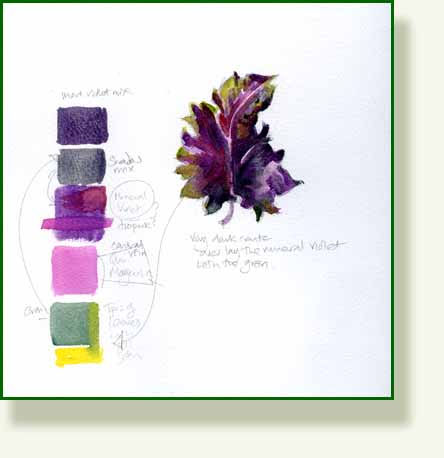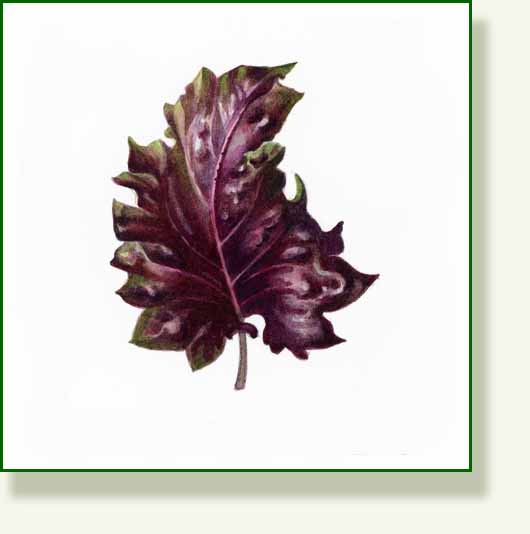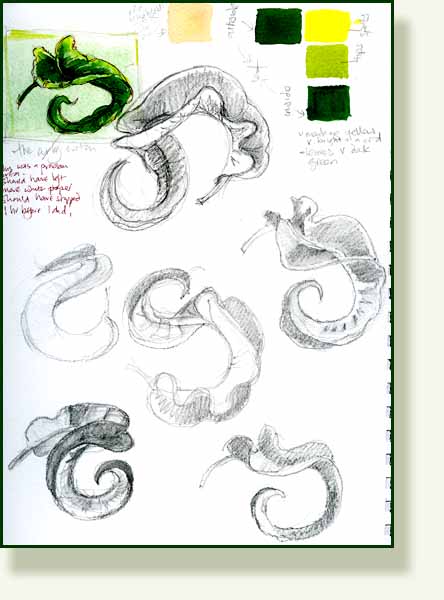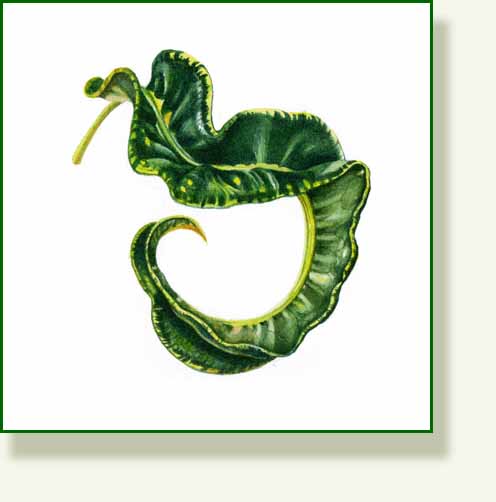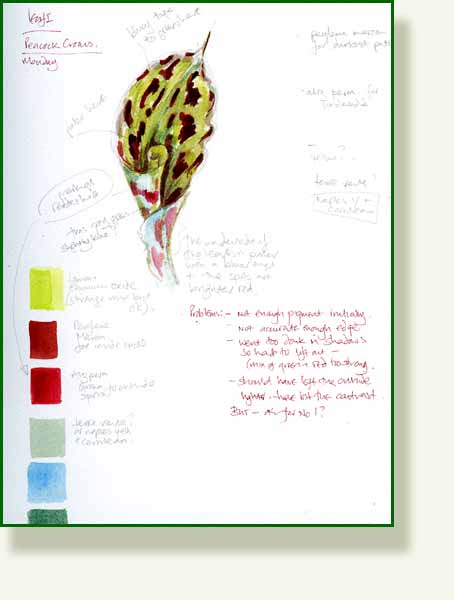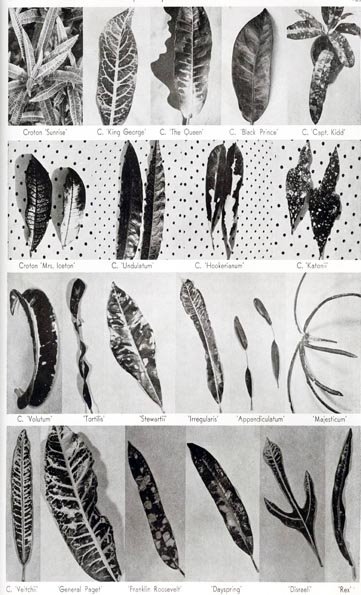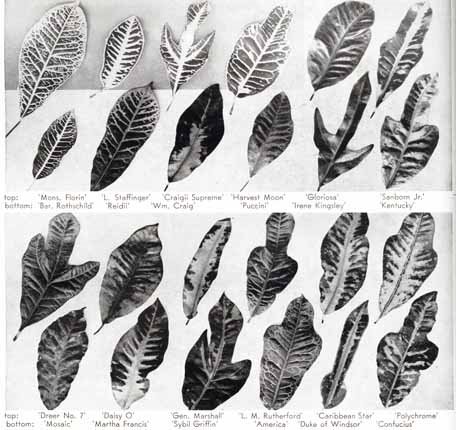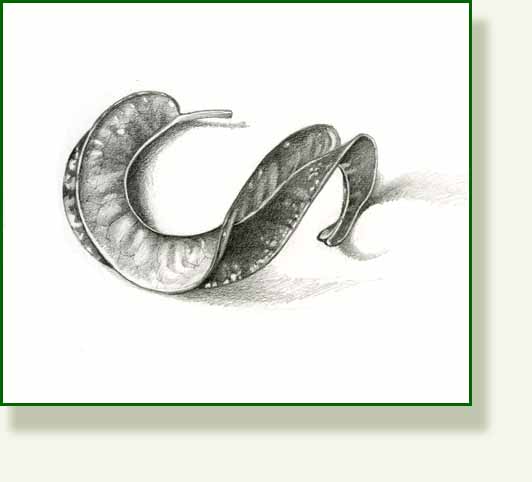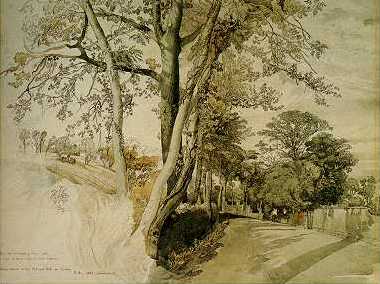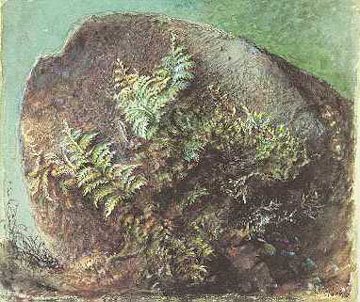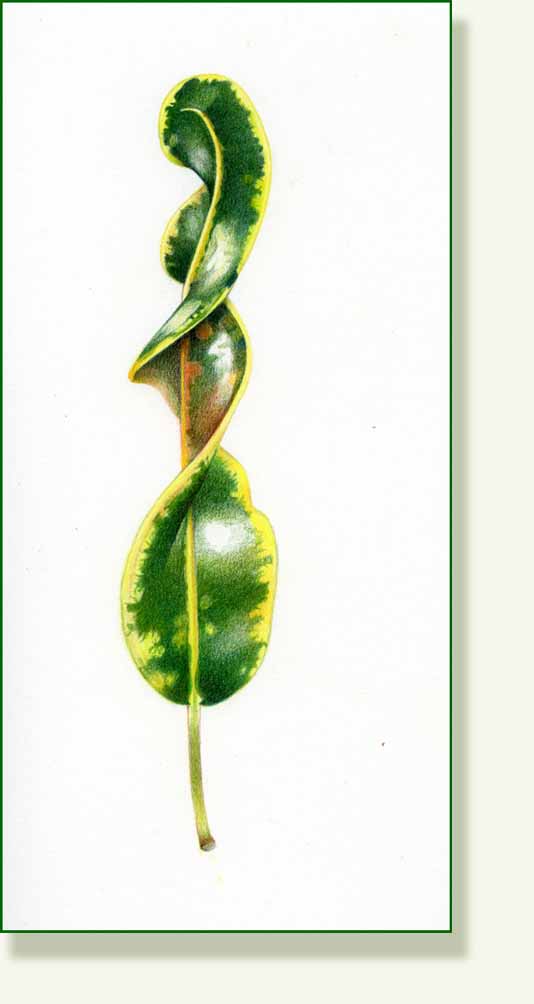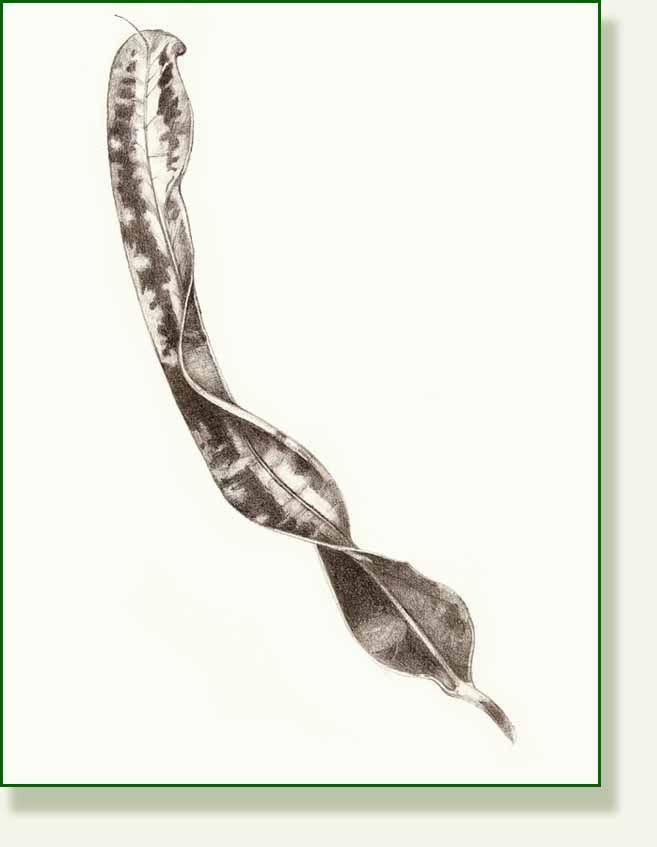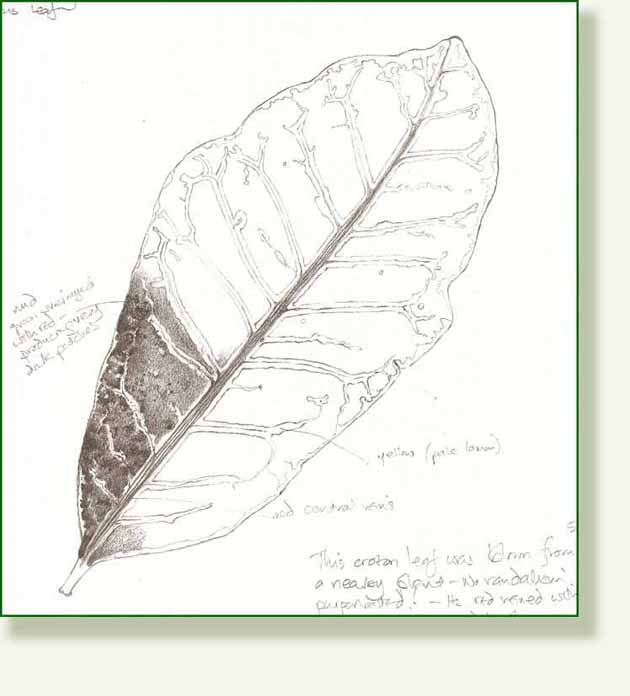It’s that day.. that Friday 13th day, when sensible people stay at home and artists don’t pick up a paintbrush before noon.. but I have things to do and have braved bad luck… It is interesting that in Spain it was Tuesday 13th that was considered unlucky and I am still not sure why these dates in particular are so much maligned. Christan belief certainly regards it as unlucky, to do, in the main with the day of the crucifixion and, some say, with that first naughty apple-eating escapade in Garden of Eden which supposedly occurred on Friday 13th. However the Egyptians thought it was a lucky number so today I am with the Egyptians.
It would, however, be convenient if I could just blame all my artistic problems on various inauspicious dates but I know it really has more to do with my skills or lack of them. Since Monday I have been working very hard on the watercolour leaves for the course.
So far I get one done a day. I am trying to be disciplined and make a colour note sketch first, which is, I admit very helpful.. or would be if I could then stick to those colours. I have had problems with all of them..there are 4 more to go.
The two main problems are my lighting set up and, I think, the paper I am working on which is Arches HP.
The lighting is a nightmare. Rooms in these apartments here in Florida tend to be darker, dark is cool! I chose the lightest room to work in and it has a strong side light during daylight hours which can all change in an instant if it is cloudy (often). My model is propped, clipped, taped and balanced on various supports and stuck in wet oasis to get it into the right position to work from, but when the light changes it could be a different plant. The basil was a particular problem. I decided to get an extra lamp with a daylight bulb to get a constant directional light but that conflicts with the light over my drawing board and is a completely different colour from real daylight. The leaf or whatever it is I am drawing completely changes its colour and shadows, so I am still pondering this problem.
As to paper, one of the eternal questions of watercolourists is “which paper??”, they are all so different, and a surface and weight that works for a small subject and fine detail is then difficult to work with on large bold subject. Every artist seems to work on something different. I am a big fan of Arches for loose watercolour, but I am finding this surface somewhat spongy. It may be because I work back into the paper too soon before allowing the paint to dry properly, (impatience is another failing of mine) because I am finding problems keeping sharp edges and have worked over too much in some areas trying to achieve them.
I know I should have practiced working in such fine detail on different papers before wading in to the final assignment piece, but it is the nature of this particular beast to be a deadline worker. I pay for this of course by making mistakes but on the other hand there is a rush of adrenaline which sharpens up the senses and galvanises me into action.
Here are the leaves so far with their colour note sketches. I will be looking at lighting again tomorrow. Some leaves I redrew, as the initial drawings were not quite what I wanted or the leaves had died, (as the basil did!). The ginger leaf was the only one I had, so I needed to work quickly and, bless it, it did manage to stay alive for a couple of day… in the fridge, out of the fridge, in the fridge, out of the fridge…. at the moment there are more plants in there than food.
__________________________________________
 4 Coloured Leaves
4 Coloured Leaves










